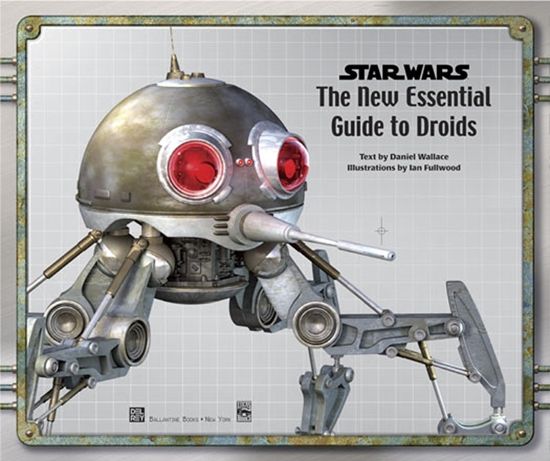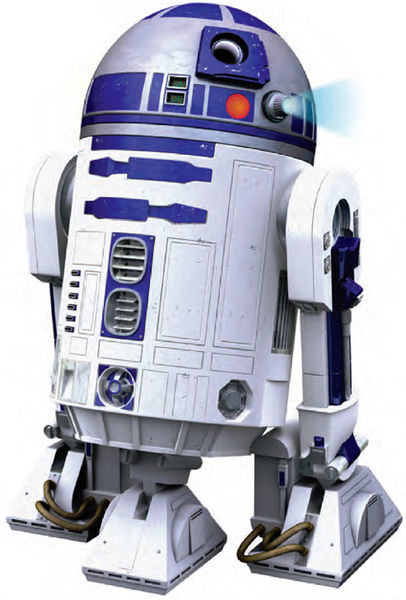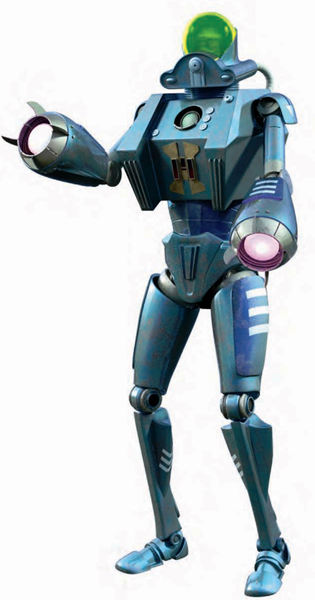A Del Rey Trade Paperback Original
Copyright 2006 by Lucasfilm Ltd. & or where indicated. All Rights Reserved. Used Under Authorization.
Published in the United States by Del Rey Books, an imprint of Random House, a division of Penguin Random House LLC, New York.
D EL R EY is a registered trademark and the Del Rey colophon is registered trademarks of Penguin Random House LLC.
eBook ISBN: 978-0-345-54281-6
Trade Paperback ISBN: 978-0-345-47759-6
Printed in the United States of America
www.starwars.com
www.delreybooks.com
Interior design and art direction by Michaelis/Carpelis Design Associates, Inc.
v3.1_r1
Author Acknowledgments
This book would not have been possible without the assistance of others. Thanks to Keith Clayton and Erich Schoeneweiss at Del Rey; Jonathan Rinzler, Leland Chee, Sue Rostoni, Pablo Hidalgo, and Amy Gary at Lucasfilm; Ian Fullwood for his beautiful illustrations; and Steve Saffel, Aaron Allston, Bob Vitas, Jason Fry, Colleen Lindsay, and Haden Blackman for their contributions in matters both great and small.
Special thanks to Eric Trautmann and Drew Campbell, authors of the superb 1997 role-playing guidebook Cynabars Fantastic Technology: Droids.
Thanks also to Abel Pea, whose suggestions and access to Star Wars obscurities led to the inclusion of entries for the homing droid, Iron Knight, and Jawa monster droid (better known to children of the 1970s as the output of the Droid Factory playset from Kenner).
And, of course, thanks to George Lucas, for creating a universe that has been such fun to illuminate.
Artist Acknowledgments
Once again it has been my privilege to work on another fantastic book for Del Rey. The production of the illustrations was made possible only by a team of people pulling together behind the scenes. I want to thank Erich Schoeneweiss and Keith Clayton for ensuring I stayed on track; Sylvain Michaelis of Michaelis/Carpelis Design for page and content design; and Jonathan Rinzler, Troy Alders, and Leland Chee from Lucasfilm for guidance on the artwork.
My special thanks must go to Ben Robins, who worked alongside me and is responsible for many of the wonderful illustrations.
Thanks also to Paul Bates, Rob Garrard, and Mike Wyatt for their contributions.
To Emma
C ONTENTS
I NTRODUCTION
W hat would Star Wars be without droids?
In the mid-1970s, to sell George Lucass risky idea to potential movie studios, artist Ralph McQuarrie worked up a series of conceptual paintings. One depicted the slender, golden C-3PO and the rotund R2-D2 cresting a desert dune. The two robots in the painting conveyed an air of eerie otherworldliness, but in the final film, the warm bickering between the two grounded the proceedings in the familiar humor of Abbot and Costello. The robotsor droids, as Lucas called thembecame some of the most human characters of the classic trilogy.
The Expanded Universe of comics, novels, and games jumped in to swell the ranks of Star Wars droids. When the first edition of The Essential Guide to Droids hit bookstores in 1998, it became clear that droids could fill any niche, from childcare to bartending. No matter what problem the inhabitants of the Star Wars galaxy might face, they could be sure of one thingthere was probably a droid for it.
Then came the prequels. Helped along by the vivid imaginations of a new generation of concept artists, the droids of the prequels wormed their way into nearly every frame of film. A unicycle droid pulled a rickshaw on Tatooine, while another served hot plates in a retro diner on Coruscant. Droids installed panes of glass, tinkered with Podracers, and delivered babies.
And, of course, droids made menacing, implacable soldiers. The Separatists use of factory-built battle droids raised an interesting question of moral ambiguity, especially after the Republic assembled an army of vat-grown clones to oppose them. This conflict came to a head in Revenge of the Sith, when the heroes suddenly became the hunted and droids turned out not to be the true bad guys after all.
The New Essential Guide to Droids is proud to present all the key automatons from both the classic trilogy and the prequel trilogy, as well as notable Expanded Universe players, and a few nostalgic gems from decades gone by.
A L AYPERSONS G UIDE TO D ROIDS
C itizens on any industrialized world can barely conceive of life without droids. For uncountable generations, automata have performed the jobs that intelligent beings are unwilling or incapable of doing.
Cybot Galactica defines droid as a mechanical and/or electronic construct designed and put into service to assist organic life. Most would consider this definition incomplete. A droid is generally distinguished from a robot by having a self-aware consciousness (though some use the terms droid and robot interchangeably), and is set apart from a computer by having a self-contained method of locomotion, such as wheels, legs, treads, or repulsorlifts. Droids can usually manipulate their environment with the mechanical equivalents of arms and hands, and most possess some method of communicating with organic beings or other droids.
Every standard day, millions of subservient automata negotiate treaties, repair hyperdrives, cure plagues, incinerate garbage, nurse children, haul cargo, deliver messages, cook meals, and destroy enemies. At the same time, droids are ignored and unappreciated, treated as chattel by many owners and regarded with outright hostility by others. Though anti-droid prejudice is a reality among the unenlightened, owners who have spent long stretches with their droids have discovered that they can be both trusted companions and loyal friends.
But even if some citizens despise droids, everyone relies on them to keep the gears of the galaxy turning. Droid manufacturing is a profitable and competitive industry. The Big Two droid makers, Cybot Galactica and Industrial Automaton, are among the most important players in the galactic economy, and during the Clone Wars, the Geonosian workers of Baktoid Combat Automata built one of the largest mechanical armies the galaxy has ever seen. The droid business has been responsible for erecting enduring industrial wonders from the endless smokestacks of Mechis III to the spacegoing junkyard known as Droid World (aka Kligsons Moon).
Droids are grouped into five major classifications depending on the nature of the work that their manufacturers build them to perform:
Class one droids are found in the fields of medicine, mathematics, and the physical sciences.
Class two droids perform engineering tasks, environmental work, and advanced starship repair.
Class three droids are built to interact with humans and other organic beings in tasks including protocol, tutoring, and child care.
Class four droids are dangerous automata built for violence. Security droids are the most benign, while assassin droids are the most malicious.
Class five droids, which are typically built without advanced cognitive modules, work as basic labor units in jobs such as lifting, maintenance, and sanitation.

















